Abstract
The growth of Salmonella enteritidis PT4 in albumen around an intact yolk was governed by the age of the egg on inoculation. In the majority of eggs, held at 20 degrees C, the bacterium was unable to grow rapidly until eggs had been stored for approximately 3 weeks. The multiplication of S. enteritidis in stored eggs appeared to be associated with alterations to the yolk membrane which allowed the bacterium to either invade the yolk or obtain nutrients from it. The rate at which egg contents change to permit the growth of S. enteritidis would appear to be temperature related and took place more rapidly when eggs were stored under conditions where temperatures fluctuated and, on occasions, reached 30 degrees C.
Full text
PDF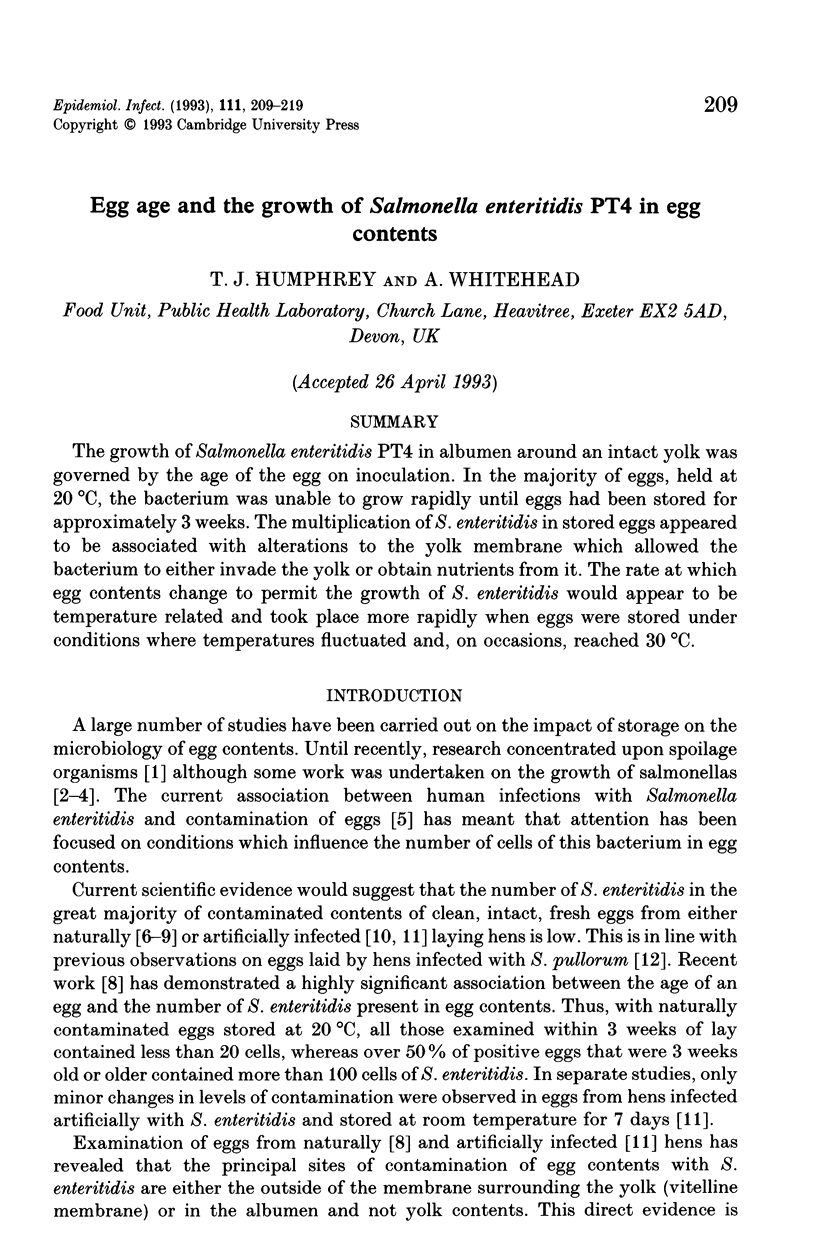




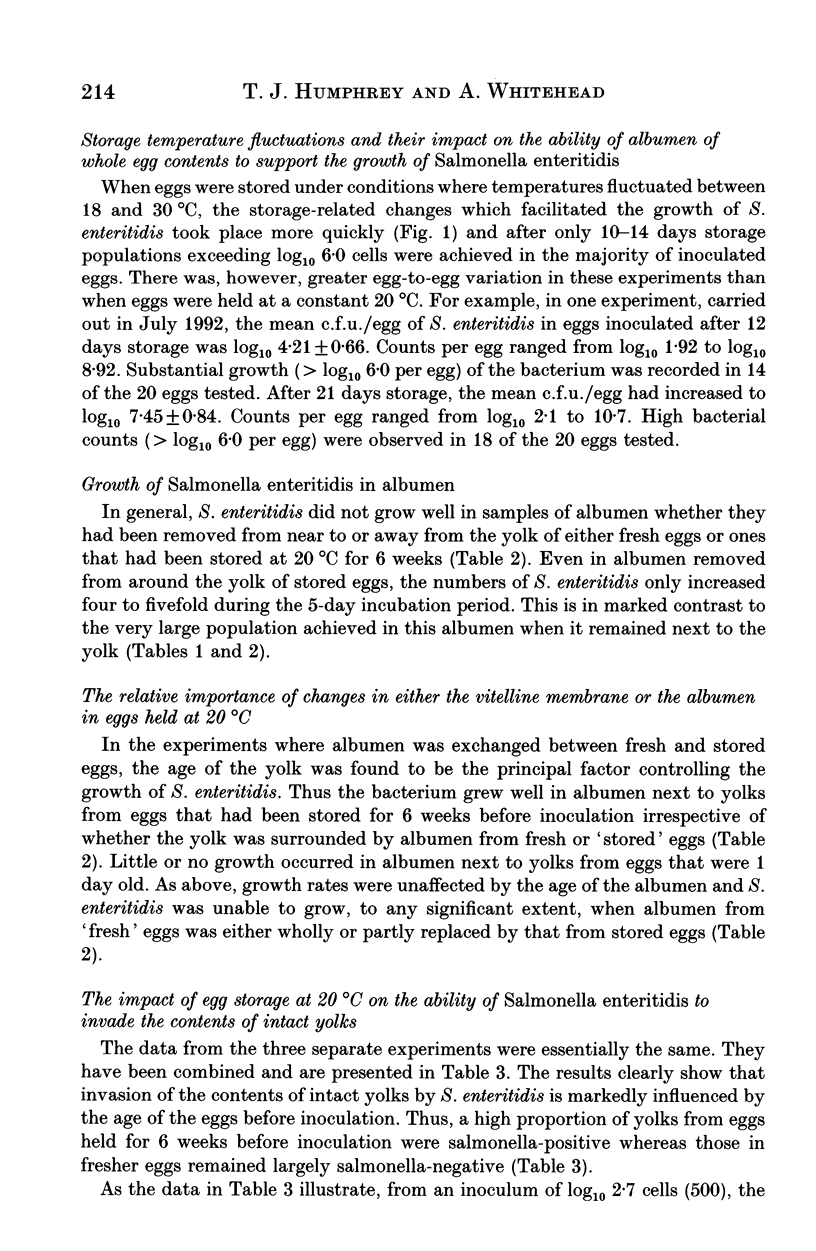
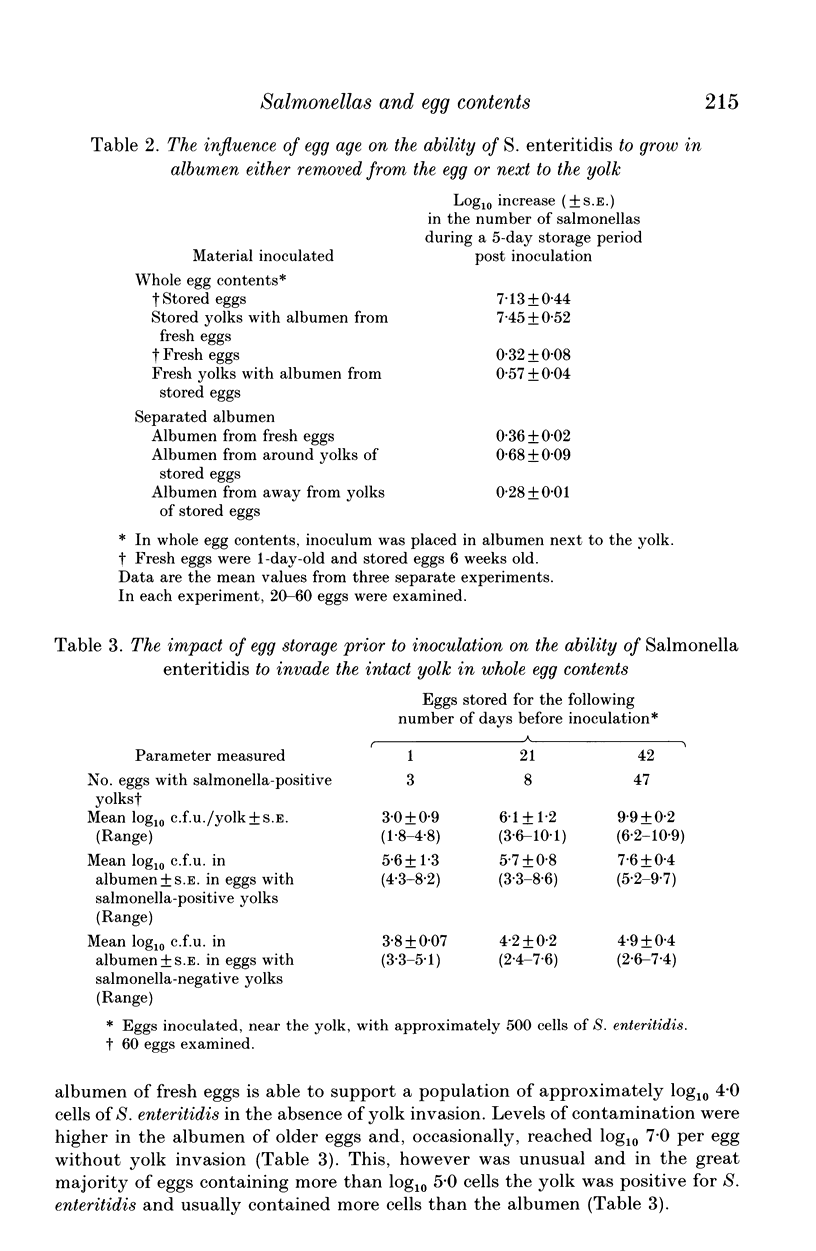
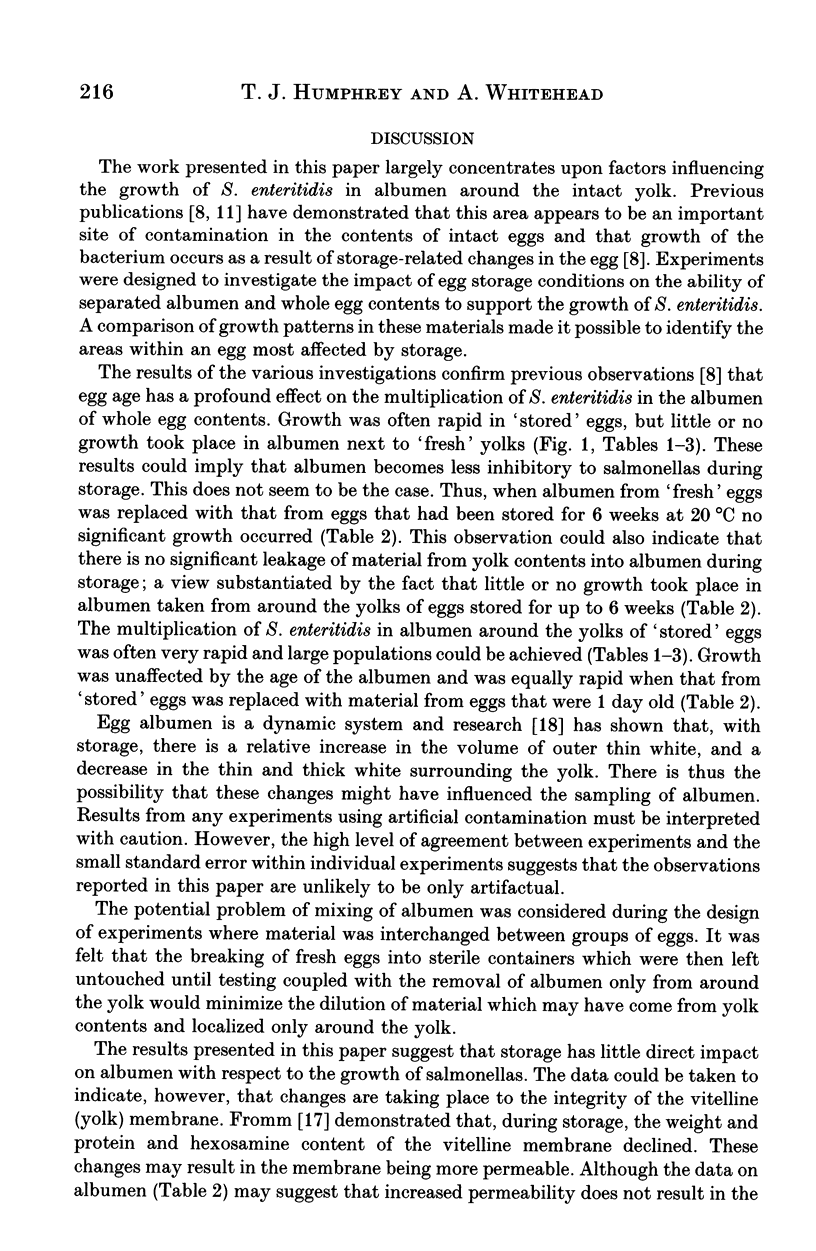
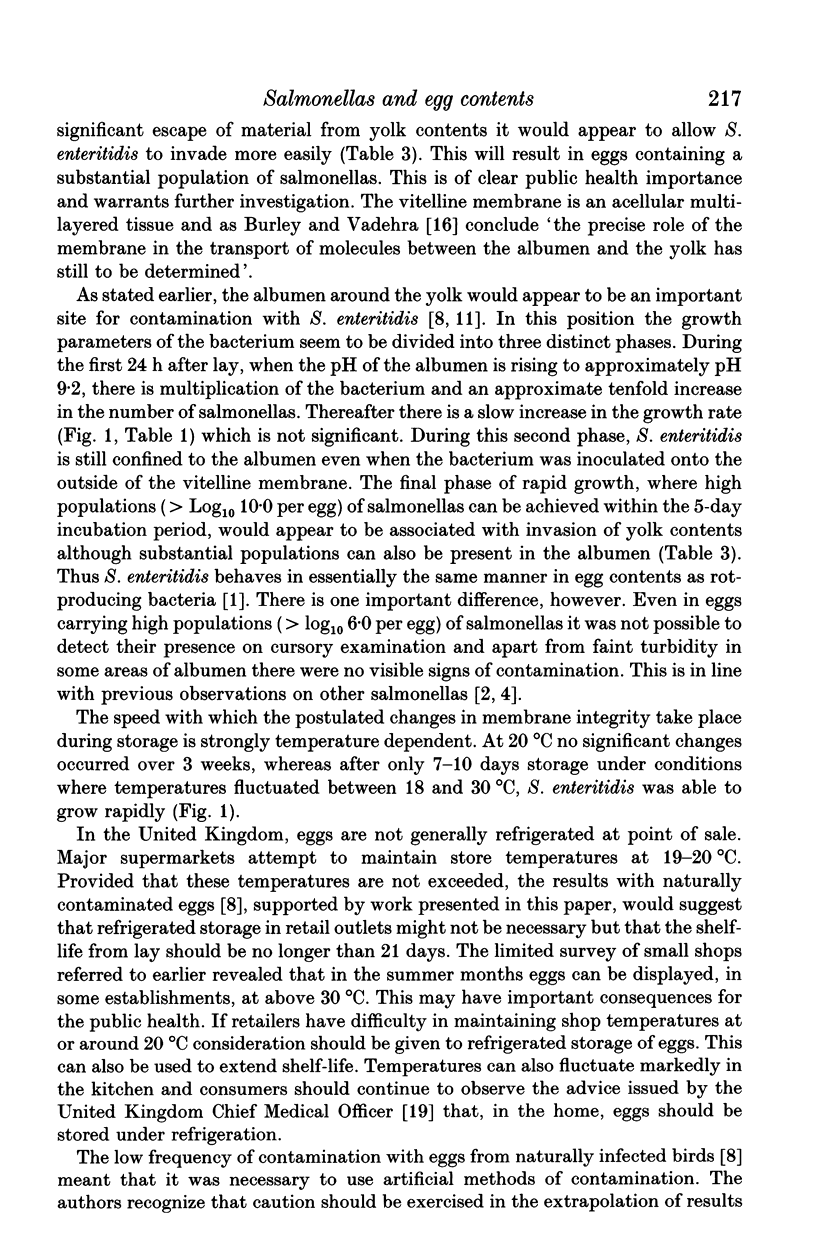
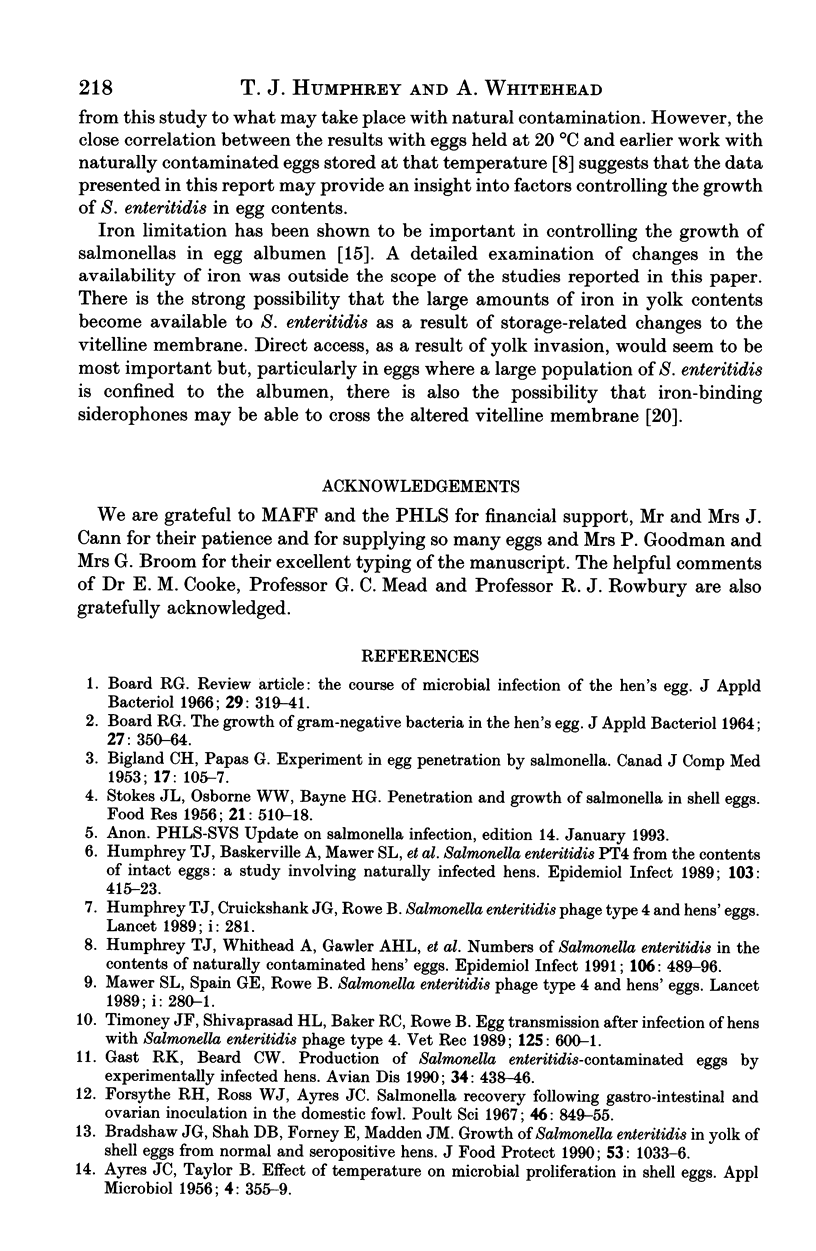
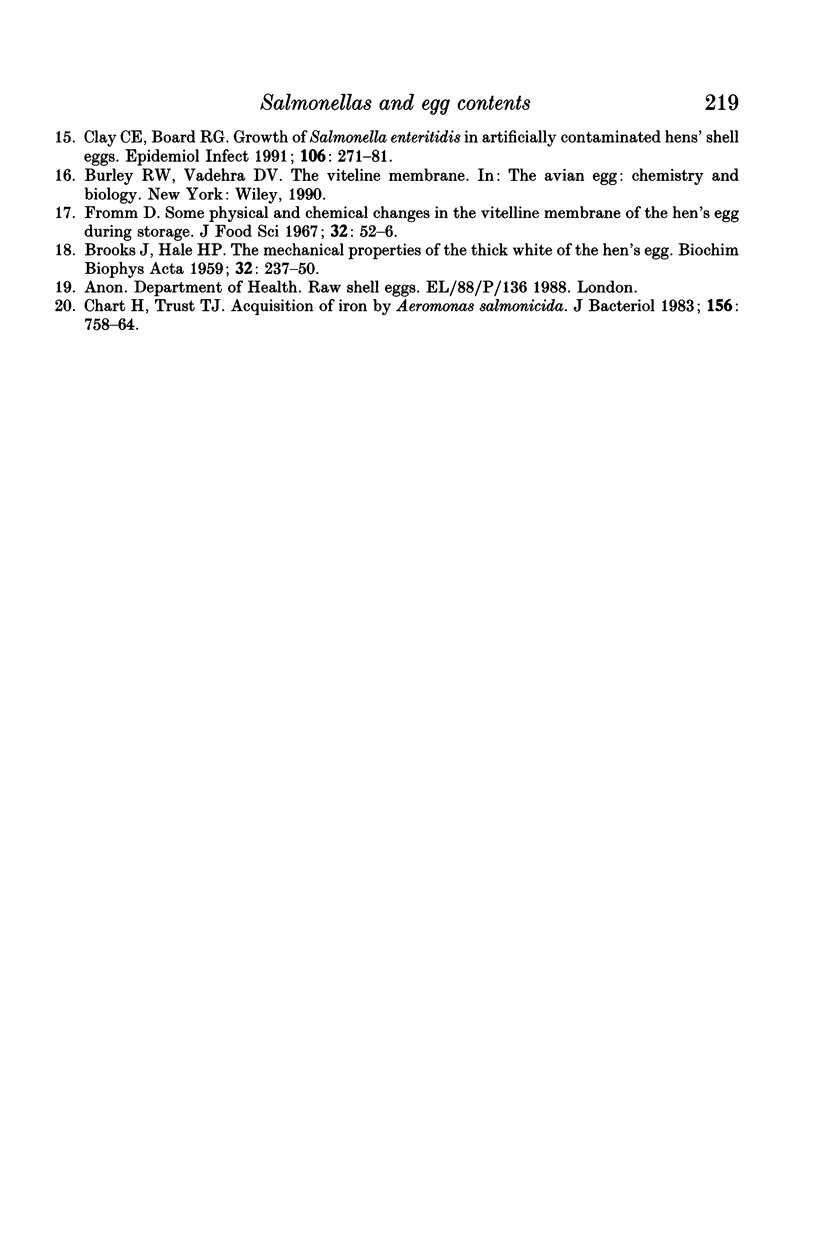
Selected References
These references are in PubMed. This may not be the complete list of references from this article.
- AYRES J. C., TAYLOR B. Effect of temperature on microbial proliferation in shell eggs. Appl Microbiol. 1956 Nov;4(6):355–359. doi: 10.1128/am.4.6.355-359.1956. [DOI] [PMC free article] [PubMed] [Google Scholar]
- BROOKS J., HALE H. P. The mechanical properties of the thick white of the hen's egg. Biochim Biophys Acta. 1959 Mar;32(1):237–250. doi: 10.1016/0006-3002(59)90574-8. [DOI] [PubMed] [Google Scholar]
- Bigland C. H., Papas G. Experiment in Egg Penetration of Samonnella. Can J Comp Med Vet Sci. 1953 Mar;17(3):105–109. [PMC free article] [PubMed] [Google Scholar]
- Board R. G. Review article: the course of microbial infection of the hen's egg. J Appl Bacteriol. 1966 Aug;29(2):319–341. doi: 10.1111/j.1365-2672.1966.tb03482.x. [DOI] [PubMed] [Google Scholar]
- Chart H., Trust T. J. Acquisition of iron by Aeromonas salmonicida. J Bacteriol. 1983 Nov;156(2):758–764. doi: 10.1128/jb.156.2.758-764.1983. [DOI] [PMC free article] [PubMed] [Google Scholar]
- Clay C. E., Board R. G. Growth of Salmonella enteritidis in artificially contaminated hens' shell eggs. Epidemiol Infect. 1991 Apr;106(2):271–281. doi: 10.1017/s095026880004841x. [DOI] [PMC free article] [PubMed] [Google Scholar]
- Forsythe R. H., Ross W. J., Ayres J. C. Salmonellae recovery following gastro-intestinal and ovarian inoculation in the domestic fowl. Poult Sci. 1967 Jul;46(4):849–855. doi: 10.3382/ps.0460849. [DOI] [PubMed] [Google Scholar]
- Gast R. K., Beard C. W. Production of Salmonella enteritidis-contaminated eggs by experimentally infected hens. Avian Dis. 1990 Apr-Jun;34(2):438–446. [PubMed] [Google Scholar]
- Grannum P. A., Ghidini A., Scioscia A., Copel J. A., Romero R., Hobbins J. C. Assessment of fetal renal reserve in low level obstructive uropathy. Lancet. 1989 Feb 4;1(8632):281–282. doi: 10.1016/s0140-6736(89)91296-8. [DOI] [PubMed] [Google Scholar]
- Humphrey T. J., Baskerville A., Mawer S., Rowe B., Hopper S. Salmonella enteritidis phage type 4 from the contents of intact eggs: a study involving naturally infected hens. Epidemiol Infect. 1989 Dec;103(3):415–423. doi: 10.1017/s0950268800030818. [DOI] [PMC free article] [PubMed] [Google Scholar]
- Humphrey T. J., Whitehead A., Gawler A. H., Henley A., Rowe B. Numbers of Salmonella enteritidis in the contents of naturally contaminated hens' eggs. Epidemiol Infect. 1991 Jun;106(3):489–496. doi: 10.1017/s0950268800067546. [DOI] [PMC free article] [PubMed] [Google Scholar]
- Timoney J. F., Shivaprasad H. L., Baker R. C., Rowe B. Egg transmission after infection of hens with Salmonella enteritidis phage type 4. Vet Rec. 1989 Dec 9;125(24):600–601. [PubMed] [Google Scholar]


